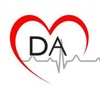In the world of emergency medical procedures, AEDs and defibrillators stand as essential tools for saving lives. Whether you're at home, in the workplace, or out in public, knowing how to use an AED or defibrillator can make a significant difference in critical situations.
Don't let the complexity of these devices intimidate you; this beginner's guide will walk you through the basics of using zoll defibrillator, empowering you to take action confidently when faced with a cardiac emergency.
The Importance of AEDs
AEDs, or Automated External Defibrillators, are portable devices designed to deliver an electric shock to the heart in cases of sudden cardiac arrest (SCA). SCA occurs when the heart's electrical system malfunctions, causing it to beat irregularly or stop altogether. Without immediate intervention, SCA can be fatal within minutes.
AEDs are crucial because they can restore the heart's normal rhythm by administering a controlled electric shock, providing a vital lifeline until medical professionals arrive.
How Does an AED Work?
Using an AED may seem daunting at first, but the process is straightforward and designed for ease of use. Here's a simplified breakdown of how it works:
Power On: Start by powering on the AED. Most devices have a prominent power button that is easily accessible.
Follow Voice and Visual Prompts: Once powered on, the AED will provide clear voice and visual prompts to guide you through each step of the process. These prompts are designed to be user-friendly, even for those with minimal training.
Prepare the Patient: Lay the patient on a flat surface and expose their chest. Ensure that the chest is dry, as moisture can interfere with the AED's ability to analyse the heart rhythm.
Apply Electrode Pads: The AED typically comes with electrode pads that need to be placed on the patient's bare chest. Follow the illustrations on the pads for proper placement.
Analyse Heart Rhythm: Once the electrode pads are in place, the AED will automatically analyse the patient's heart rhythm. Stand clear of the patient during this process to avoid interference.
Deliver Shock: If the AED detects a shockable rhythm, it will prompt you to deliver a shock by pressing the designated button. Make sure no one is touching the patient before administering the shock.
Perform CPR: After delivering the shock, the AED may instruct you to perform CPR until further assistance arrives. Follow the provided guidance for chest compressions and rescue breaths.
Tips for Using an AED Effectively
While using zoll defibrillator, keep the following tips in mind to ensure optimal effectiveness:
Stay Calm: In an emergency situation, it's natural to feel overwhelmed. However, maintaining a calm demeanour will help you focus and follow the AED's instructions accurately.
Check for Safety: Before using the AED, ensure that the surrounding area is safe for both you and the patient. Remove any conductive materials or hazards that could pose a risk during the procedure.
Practice Proper Placement: Correct electrode pad placement is crucial for the AED to accurately assess the heart rhythm. Take the time to position the pads correctly, following the device's guidelines.
Don't Hesitate to Use It: If you encounter a situation where someone is experiencing sudden cardiac arrest, don't hesitate to use the AED or defibrillator. Time is of the essence, and early defibrillation can greatly increase the chances of survival.
Seek Training: While AEDs are designed for ease of use, receiving formal training in CPR and AED usage can enhance your confidence and effectiveness in emergency situations. Many organisations offer courses that cover basic life support techniques.
Conclusion
In times of medical emergencies, having the knowledge and skills to use zoll defibrillator can mean the difference between life and death.
By familiarising yourself with the basic steps outlined in this guide and staying calm under pressure, you can become a valuable asset in your community's emergency response efforts. Remember, every second counts in cardiac emergencies, and your swift action could save a life.

No comments yet